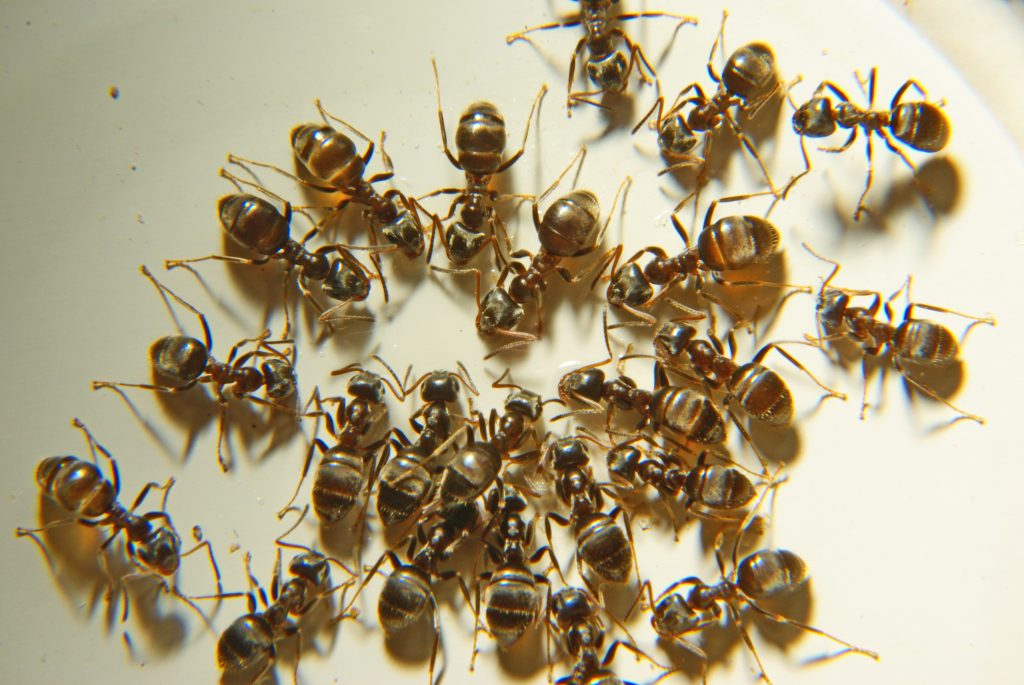Lately, whenever I start to beat up on myself for struggling with a new skill, attitude or behavior, I think about ANTS. Not ‘ants’ but “ANTS” — Automatic Negative Thoughts — my favorite chapter in Jack Canfield’s book The Success Principles. It always reminds me of the incredible women with whom I shared it.
When I first read it, I was working with women in pretty dire straights — parole, probation, addiction, domestic violence, homelessness — these ladies were living with some ANTS that were going to be tough to exterminate.
[Tweet “These ladies were living with some pretty big ANTS”]
Applying a little PMA — positive mental attitude — was not going to work. In those circumstances looking in a mirror to say “I love myself” brought about immediate and powerful rejection of the thought: recent history told them it was simply not true. We needed to find a way to honor and respect that so we started with statements they could accept, affirmations like “I’m not as messed up as I was yesterday.”
The parolees and I moved on to brain biology and bike riding.
They learned the ability to form conscious thought was millions of times newer than all those involuntary and semi-voluntary impulses. They pictured the brain as a favorite piece of fruit, with higher functions taking up only as much space as the peel. The image helped us all understand why remaining realistically hopeful was so much hard work.
[Tweet “…helped us understand why remaining hopeful was so much work”]
And bike riding? Most could related to the learning process: it took every ounce of concentration we had to coordinate pushing off, balancing, pedaling, steering and not crashing. The ‘orange peel’ (conscious thinking space) was busy…. a little chaotic, perhaps. Before long, with some practice, you just got on your bike and went places. The task called “learning to ride a bike” was filed somewhere in the storage (less conscious) part of your brain, able to move freely between “deliberate” and “fairly automatic”.
Most of the time, the process serves us well. Can you imagine how overwhelming day-to-day activities would be if we had to apply the “learning to ride a bike” level awareness to everything we do? That’s pretty much what they were up against.
We visualized all sorts of ways to get rid of imaginary ants: some of the women used a vacuum cleaner or a flame-thrower while others invited ANTS to leave by following trails of sugar or honey. We laughed and celebrated creativity, humor and imagination. Gradually, they became willing to practice noticing small positives like being grateful to be housed at an addiction treatment center rather than in jail. To be at least physically safe and distant from batterers. To appreciate whatever level of health and life they had left. To begin to trust that change is possible.
I am grateful. Sometimes when I’m struggling to be a friend to myself I think of these ladies, laugh and go on to do the next right thing. If I keep trying, it will get easier.
##
Ready to move on from ANTS to tackle that pesky Inner Critic? Look for The Inner Critic Advantage: Making Peace With the Noise in Your Head by Andrea Patten now on Amazon.
Let’s connect on social media.





8 Comments
Sheila Callaham
What a wonderful gift to share with those women. I’m sure you made an unforgettable impression on them and I’m inspired by your story. I see so many people with this mindset. What often surprises me is how defensive they are about it, as if letting go of the negativity will leave them with nothing. It makes me sad that our world is filled with such doubt, which makes me so glad to know that wonderful people like you are making inroads wherever you can! Keep up the great work!
Andrea
Thanks, Sheila. Actually, I think you hit the nail on the head — sometimes people are hanging on to the only thing they know. When life experience teaches you that life is harsh and disappointing hope can seem cruel. That’s why the tiny little steps are so important.
Rachel
Love this term, I need to read the success principal.
Sue Kearney (@MagnoliasWest)
Even the smallest and mundane gratitudes can be life- and game-changing. Thanks for sharing your story of this.
Blessed be!
Sue
Nadia
Wow! Andrea 🙂 This story so touched my heart. Powerful, powerful work. Brilliant way to visualize and teach about brain elasticity. Check out Laurel Mellin’s book ‘ Wired for Joy’ I think you would totally appreciate her work.
It is the work that saved my life after two major burnouts. With the help of Laurel Mellin’s genius I began the rewiring of my stress circuits to joy circuits.
Andrea
There’s so much information that can help people take charge and move forward — I think that’s why I’ve managed to hang in there with Inner Critic to Inner Ally. It’s going to happen. 🙂
Jan Deelstra
Andrea, this is so poignant and powerful. There is a lesson to be learned in every event, regardless of how nefarious. It’s what we do with, and how we utilize the event that counts. And although finding the blessing in the mire is at times akin to climbing Mt. Everest in a body cast, my experience has been that if we truly seek the powerful gem, our reward is well worth the climb. On another note, I will share with you that there came a point in my life, when I was about ti turn thirty, that I discovered an inability to express “joy.” I was involved in a gestalt group (which has now become the foundation of my women’s empowerment coaching business) that asked us to express the emotion of “joy” using our hands. Long story shortened, I could not. I had no frame of reference for “joy.” However, that awareness lit the wick of my passionate purpose to live in joy and to share joy with other women by teaching them to turn struggles into strength. Whenever I have begun to wallow in pity, I have quickly reminded myself of the brain pathways I am constructing. And then, I seek consciously for the joy that builds the super highways of success and fulfillment. Thanks so much for this powerful reminder. xox
Andrea
Thanks so much, Jan. I can see why you were selected as a co-author for Choosing Happiness!